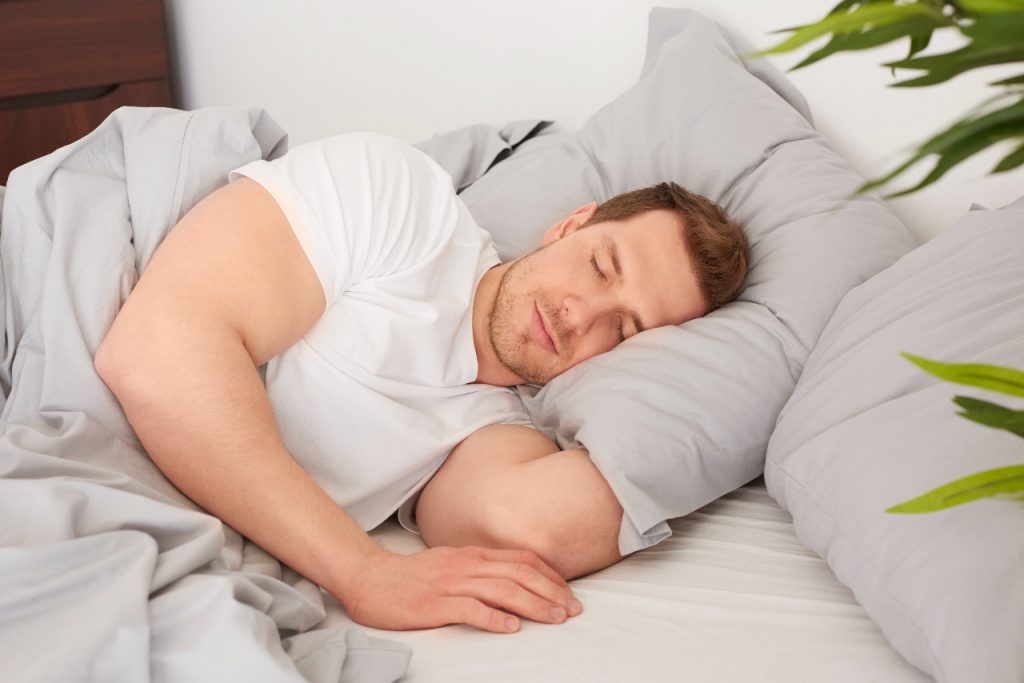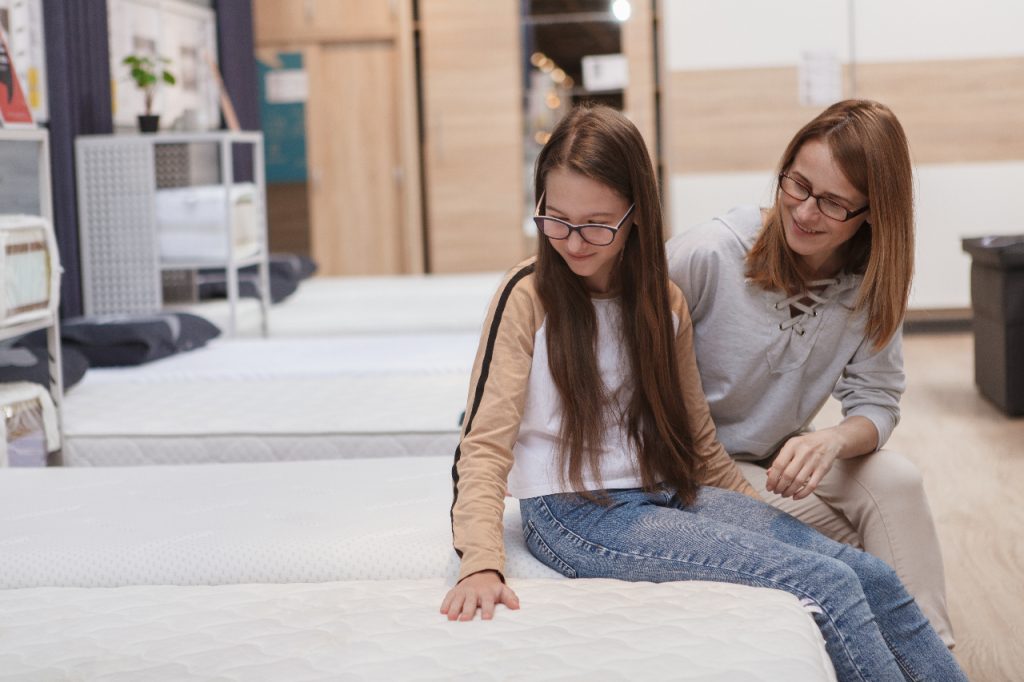How can you choose the best mattress for lower back pain?
Disclaimer: The reviews and ratings are based on criteria that our sleep researchers deem important. This is a comparison site operated by DIBMat GmbH, a fully-owned subsidiary of Emma Sleep that owns the Emma mattress featured on this site. Our researchers try their best to keep all details and promos updated. Full details
- Consider your sleeping position
- Know what your firmness preference is
- Understand the components of the mattress
- Look for back support features
- Know when it is time to replace the mattress
Lower back pain is a widespread problem that affects approximately 540 million people worldwide and is one of the top reasons people see a doctor. It affects the lumbar region of the spine and can be debilitating enough to interfere with nearly all aspects of daily life, including sleep.
Sleep is a key time for the body to recover at the end of the day. You may not realize it but your choice of mattress can be a major contributing factor for exacerbating lower hip pain. Therefore, you would want to learn more about how to choose the best mattress for lower back pain.
With lower back pain, it can be challenging to find a comfortable sleeping position. Upon waking up during the night, getting back to sleep can be difficult because of the ongoing aches and discomfort.
Lower back pain can also contribute to stress, depression, and anxiety — all of which are detrimental to quality sleep. It comes as no surprise for researchers to find that more than half of the people with lower back pain (58.7%) report having sleeping problems.
There is no perfect mattress for lower back pain, but some factors to consider include proper spine support, comfort, and pressure relief. So, how do you pick the most ideal mattress that will offer lower back pain relief and provide restorative sleep? Here is a comprehensive guide to help you choose. Read on.
Consider your Sleeping Position

When choosing a mattress for your lower back, the sleeping position should influence your final decision. Sleep position is directly linked with maintaining a proper spinal alignment and consequently, avoiding lower back pain.
A low-quality mattress that does not match your sleeping position will put pressure on the lower spine and can cause pain and stiffness. This pain may worsen in the morning and persist throughout the day, causing excessive daytime sleepiness and fatigue, lower work performance, and various cognitive impairments.
Everyone has different sleep positions. But, what’s important is to choose a mattress designed to cushion pressure points and support the natural curvature of the spine to help alleviate some of the lower back pain. Here are the three most common types of sleeping positions and how they affect the lower back.
- Side sleepers – Side sleepers need a mattress that can cradle the lower back and prevent it from sinking. This is due to heavy pressure on the lower back during sleep.
- Stomach sleepers – Stomach sleepers put too much strain on their back and spine because of the position. An ideal mattress should allow for neutral positioning of the spine during sleep.
- Back sleepers – Body-contouring mattresses are the best choice for back sleepers since they offer cushioning against gaps between the mattress surface and lower back.
Know What Your Firmness Preference Is
Mattress firmness refers to how soft or hard a mattress feels when you lie down on it. It provides the “push-back” factor against the body. While the mattress manufacturing industry does not have a standardized measurement for firmness, knowing your firmness preference is key to alleviating lower back pain.
More recent surveys and studies have increasingly suggested that medium-firm mattresses are the best for sleep comfort, quality, and spinal alignment. Other studies also leaned toward medium firmness mattresses as being generally better for people who suffer from lower back pain.
A medium-firm mattress helps support the lower back because it provides a good ratio between sink and support. It adjusts to the spine’s natural curve, minimizing the gap between the back and the bed.
Meanwhile, a firm mattress will put more pressure on the back and force the spine into an unnatural position, while an exceedingly soft mattress will sink the body.
Understand the Components of the Mattress

Before making a purchase, remember that different mattresses are made with different materials. The internal components are responsible for providing support and different mattress brands vary in this aspect.
You have several options and several manufacturers offer mattresses constructed specially to alleviate lower back pain. Take the Emma Sleep Mattress for example. It has advanced zoning features and 3 layers of memory foam that distributes all pressure evenly across the mattress and adapts to any body shape to align the spine. Its components are beneficial for those with lower back pain.
Look for Back Support Features
Compared to other parts of the back, the lower back experiences the most range of motion and curvature. It comprises the five vertebrae of the lumbar spine, strengthened by shock-absorbing discs and held together by ligaments. The lower back supports most of the body’s weight and is integral to mobility — whether for standing, sitting, walking, or lying down.
Given the complexity of the lower back and how much we depend on it, it comes as no surprise for it to be more susceptible to injury related to movement and posture, including positioning during sleep.
If your mattress offers insufficient support, the lower back may be forced into an unnatural position. It will also make the hips carry more weight and sink deeply into the mattress, forcing the lumbar area out of alignment. To avoid lower back pain, check if your chosen mattress keeps your spine in a straight line from the shoulders to your hips.
Keep in mind that most people fail to differentiate mattress firmness and support. Firmness refers to the immediate “push-back” experience felt when lying on the mattress. On the other hand, support refers to how well the mattress keeps the spine aligned.
Know When it is Time to Replace the Mattress

In general, a mattress has an average lifespan of about 7 to 10 years. Beyond that, it can indicate more signs of succumbing to wear and tear. While many people rely on the warranty of the top mattress brands in Australia to determine when it’s time to replace them, you need to know the tell-tale signs that validate a mattress replacement.
A mattress that needs to be changed will offer less spine support and can be a major factor for increased pain in the lower back. Consider the following signs for mattress replacement:
- Noisy springs
- Worsening of allergies or asthma
- Sagging
- Waking up in aches or pains
- More than 10 years of age
- Odd smells
- Changing sleeping needs
Key Takeaway
Researchers have long seen a link between lower back pain and sleeping problems, and growing evidence points to the mutually reinforcing relationship for both.
Discomfort from lower back pain can be a major barrier to falling asleep, while lower back pain can also provoke sleep fragmentation when pain surges. It is a vicious cycle that sacrifices daily living quality.
Your mattress plays a major role in getting a good night’s sleep. We hope this guide on how to choose the best mattress for lower back pain can alleviate your aches.
If you need more sleeping guides, make sure to check out our in-depth comparison of the top mattress brands in Australia! There we include the best mattress for those with lower back pain. You’ll find that the Emma Original Mattress has just the right level of firmness for a good night’s sleep.

